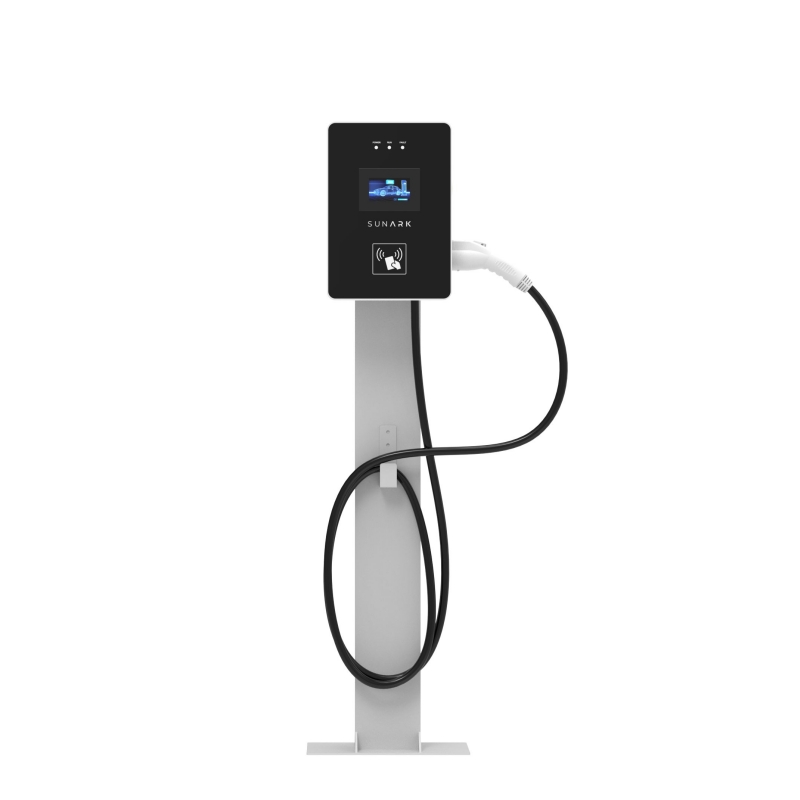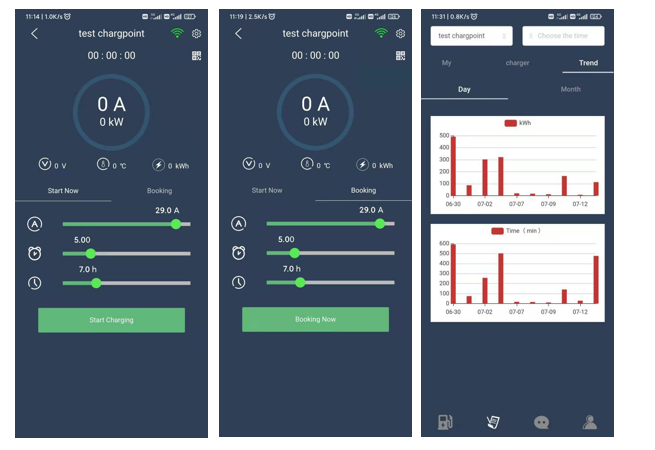A high-speed EV charger, also known as a fast charger or Level 3 charger, is a charging station that can provide a significant amount of electrical power to charge an electric vehicle (EV) at a much faster rate compared to a standard Level 2 charger. High-speed chargers are designed to deliver a high-power DC (direct current) charge directly to the EV's battery, allowing for rapid charging.
Standard:
SAE Standard / IEC StandardConnector type:
Type 1 / Type 2Connector Mechanical Operating Life:
≥10000 times
The exact charging speed of a high-speed charger can vary depending on the specific charger model and the capabilities of the EV being charged. In general, high-speed chargers can deliver anywhere from 50 kW to 350 kW or more of power, significantly reducing the charging time compared to Level 2 chargers, which typically provide power in the range of 3.3 kW to 22 kW.
High-speed chargers are typically found at public charging stations, along highways, and in commercial areas to support long-distance travel and provide quick charging options for EV owners. With a high-speed charger, you can replenish a significant portion of your EV's battery capacity in a matter of minutes, allowing you to continue your journey with minimal downtime.
It's important to note that not all EVs are compatible with high-speed chargers. Some EV models may have lower charging capacity limits, which means they won't be able to take full advantage of the higher charging speeds provided by high-speed chargers. It's always recommended to check your EV's specifications and charging capabilities to ensure compatibility with a high-speed charging station.

What advantages does it has?
Save money: they are more affordable compared to DC fast chargers.
Compatibility: AC chargers are compatible with all electric vehicles (EVs) on the market since all EVs have onboard AC-to-DC converters.
Flexibility: AC chargers come in various power ratings, typically ranging from 3.7 kW to 22 kW. This flexibility allows EV owners to choose charging speeds based on their needs.
Safer: AC chargers are generally considered safer than DC fast chargers because they operate at lower voltages.
Availability: AC charging stations are more widely available compared to DC fast chargers.
Energy efficiency: AC chargers have higher charging efficiency compared to DC fast chargers.

How to run a DC EV charge station?
Check the compatibility: first, make sure that your electric vehicle is compatible with the DC charger and the specific charging standard it supports
Check the station: to check any visible damage or signs of malfunction.
Connect cables: Lift the charging connector, which is often attached to a cable, and insert it into the vehicle's charging port.
Follow instructions: Look for any instructions or prompts displayed on the charging station's screen, if available.
Start charging: Once the connection is established and any required authentication is completed, the charging session should automatically start.
Wait for completion: Then the charging process may take anywhere from a few minutes to an hour or more, depending on the battery capacity, charging speed, and required charge level. Use this time to take a break, run errands, or relax nearby.
End the session: Once the desired charge level is reached, or you no longer need to charge, follow the instructions on the charging station to stop the charging session properly.
Disconnect and secure the cable: Once the charging session is stopped, unplug the charging connector from the vehicle's charging port.

What is the way of monitoring?
Centralized Monitor System: EV chargers can be connected to a centralized monitoring system that allows operators or administrators to remotely monitor the charging status, energy consumption, and any faults or abnormalities of the chargers.
Mobile Applications: Many EV charger manufacturers provide mobile applications that allow users to monitor and control the charging process.
Website: Some EV charging networks offer web portals where users can log in to monitor their charging sessions, view charging history, and access other relevant information.
RFID or NFC Card: EV chargers can be equipped with RFID (Radio-Frequency Identification) or NFC (Near Field Communication) card readers.
FAQs:
Q1: Do you support OEM/ODM?
A:Definitely, OEM&ODM service is supported with a certain quantity,including customize logo,package and label;
Q2: What's the production time?
A: The production time is normally 15 working days. but we will always prepare some stocks for popular models.
Q3: Can you provide DDP service?
A:Yes, if you are a personal customer and don't want to deal with the customs, we can provide DDP service to your address.
Q4: What about the warranty and how to claim?
A: Warranty period are 5 years since you receive the product, our professional after-sales team will deal with all warranty issues.